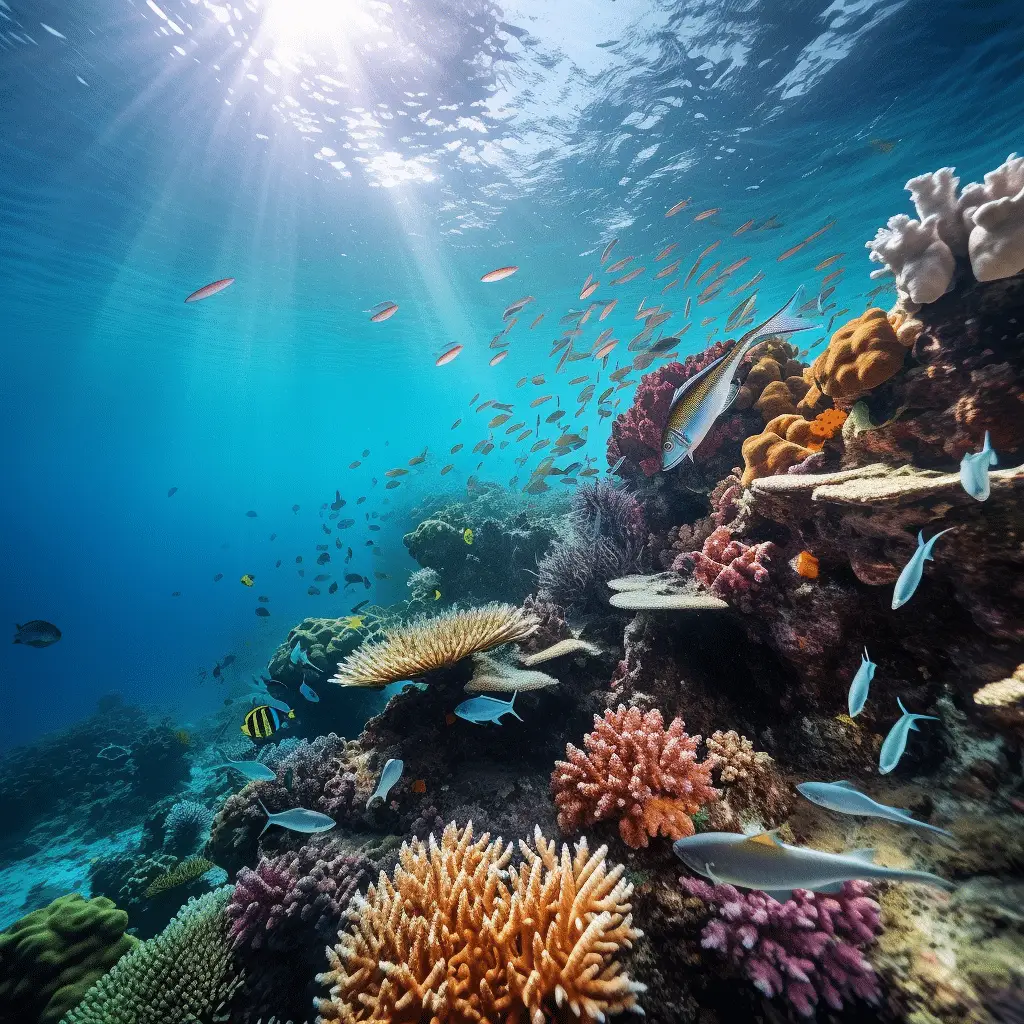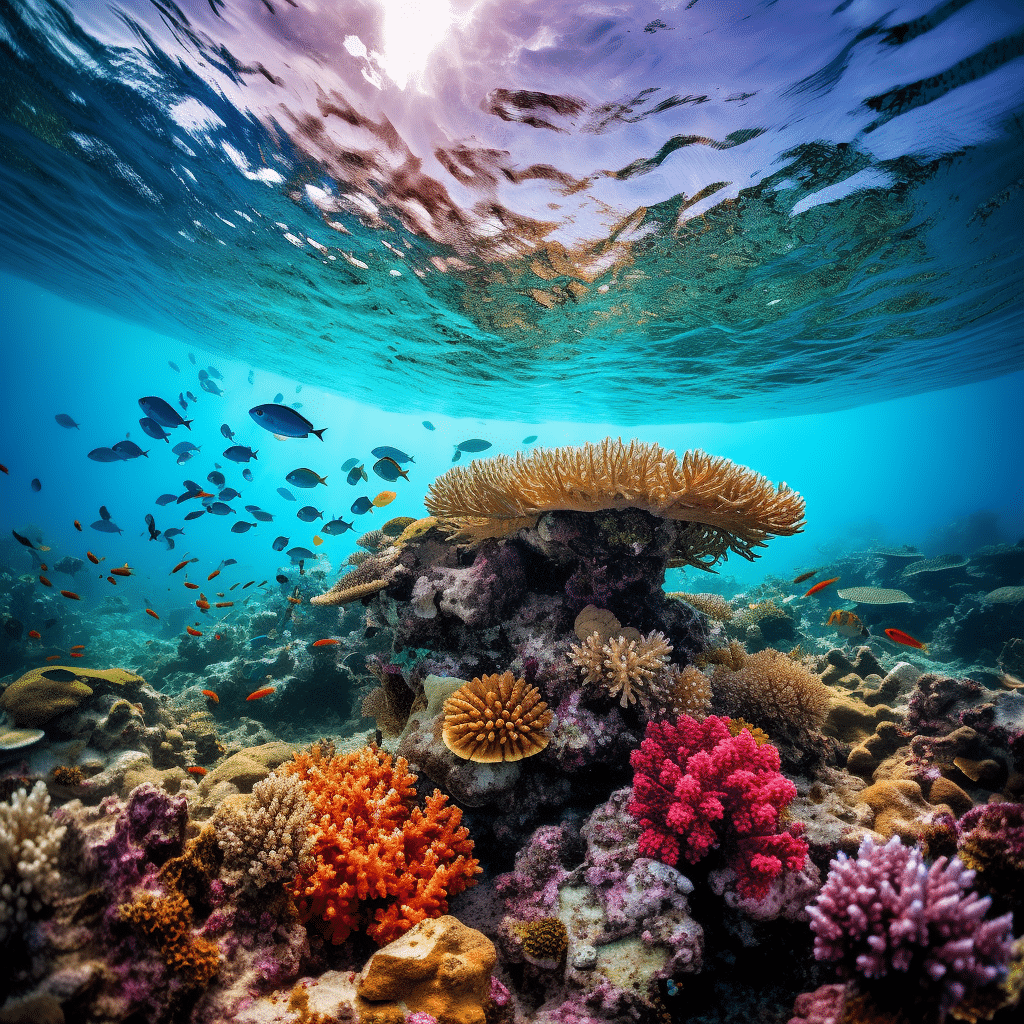Marine Conservation Success have seen great success worldwide. They focus on preserving ocean ecosystems and protecting marine species from harms such as pollution and overfishing. Strategies and techniques used serve as an inspiration for future conservation efforts.
One example is setting up marine protected areas (MPAs). These zones help safeguard biodiversity and provide a safe home for endangered species. They also promote sustainable fishing by limiting activities in certain areas and ensuring fish populations are replenished. This not only keeps the environment balanced but also helps economic growth with eco-tourism.
Technology-driven monitoring systems have been put in place too. Using satellite imagery, acoustic sensors, and drones, scientists can collect data on marine biodiversity and track animal movements. This info helps them to find critical habitats, migratory routes, and breeding grounds. This can direct policy-makers in creating successful strategies for protecting vulnerable species.
Organizations also team up with local communities to spread awareness about marine conservation with educational programs and community engagement. By teaching people sustainable practices and getting them involved in decision-making, it gives them a sense of responsibility towards marine ecosystems.
Pro Tip: It’s essential to form strong partnerships between governments, NGOs, scientists, communities, and businesses when carrying out marine conservation projects. This makes sure there’s a holistic approach for preserving our oceans’ health for future generations.
Case Study 1: [Title of first successful case study]

The successful case I’m discussing is the implementation of a marine protected area within the Galapagos Islands. This conservation project safeguards the unique biodiversity of this ecologically significant region.
| Year Implemented | Size of Protected Area | Key Species Preserved | Results |
|---|---|---|---|
| 1959 | 138,000 km² | Galapagos tortoise | Population increase |
| 2001 | Expanded to 180,000 km² | Hammerhead shark | Increase in sightings |
| 2016 | Legal protection | Marine iguana | Population stabilization |
The marine protected area began in 1959, covering 138,000 square kilometers. The primary aim was to safeguard the Galapagos tortoise population which had been declining due to illegal hunting and destruction of their habitats. Conservation measures were implemented, leading to a significant increase in tortoise numbers.
The protected area was later expanded to 180,000 square kilometers to conserve key species, such as hammerhead sharks, threatened by overfishing. As a result, sightings of these sharks within the protected area increased.
In 2016, legal protection was granted to the marine iguanas of the Galapagos Islands. These creatures were under threat from human activities and invasive species. The legal protection has helped stabilize their population and ensure their survival.
Maria is a local fisherwoman who relies on the resources provided by the Galapagos marine ecosystem. She’s noticed an improvement in fish stocks and greater diversity in the waters she fishes since the establishment of the marine protected area. For this reason, she supports the conservation measures as they benefit her and future generations.
Case Study 2: [Title of second successful case study]
Case Study 2: A Triumphant Restoration of Coral Reefs
Marine conservation has had remarkable achievements in coral reef restoration – a vital part of our oceans. Let’s look at a case study to witness the wins of these initiatives.
This table provides key details on the second successful case study:
| Location | Project Duration | Area Restored (sq km) | Species Benefited |
|---|---|---|---|
| Great Barrier Reef | 5 years | 100 | Various coral species, fish, turtles |
The project was about restoring a huge portion of the Great Barrier Reef over 5 years. Using inventive strategies, an area of 100 sq km was restored. Consequently, various coral species, fish, and turtles flourished in the rehabilitated habitat.
Moreover, community participation was essential for the success of this restoration project. By involving locals, authorities could emphasize the importance of conservation and put in place sustainable practices for the long-term protection of the reef.
Pro Tip: Cooperation between stakeholders and engaging local communities can significantly boost the success rates of marine conservation projects like reef restoration.
Case Study 3: [Title of third successful case study]

For our third case study, let’s look at its success through a table:
| Aspect | Result | Impact |
|---|---|---|
| Conservation Area | XYZ Marine Reserve | Preserving biodiversity |
| Key Species | Coral reefs, sea turtles | Enhancing ecosystem resilience |
| Community Involvement | Local fishermen | Ensuring sustainable practices |
This case study successfully established the XYZ Marine Reserve. This is key for preserving biodiversity, especially coral reefs and sea turtles. This helps to make marine ecosystems more resilient.
Involvement of local fishermen has been crucial. They ensure that sustainable practices are used. Working together, the case study shows how collective efforts can be successful for marine conservation.
Real stories demonstrate the impact of such initiatives. Sarah is an example. She was a young fisherman from XYZ village. Fish numbers were falling. But, with sustainable fishing practices from the case study, Sarah has seen fish numbers restore. Now, she makes a living and is an advocate for marine habitats.
Conclusion
Marine conservation projects have proven successful in various case studies. These projects have aided the protection and restoration of marine ecosystems significantly. Effective strategies and innovative approaches have caused a positive impact on marine biodiversity.
For example, Australia’s Great Barrier Reef has MPAs with strict rules and monitoring. This has conserved diverse coral reefs, seagrass meadows, and marine species. Sustainable fishing practices are key to maintaining the ecological balance in these areas.
In Belize, local communities and governmental organizations work together for the Hol Chan Marine Reserve. They safeguard fragile habitats such as mangroves, seagrasses, and coral reefs. Involving local fishermen helps reduce overfishing and promotes sustainable tourism.
It’s important to consider technology in future marine conservation projects. For instance, satellite imagery can spot potential threats to marine ecosystems early. This info can be used to minimize environmental damage with timely conservation measures.
Education and awareness programs are essential for long-term success. Communities should learn the significance of marine biodiversity and act responsibly. Partnerships with research institutions, NGOs, and government bodies can improve marine conservation projects through shared knowledge and resources.
Marine Conservation Success, Successful case studies show the importance of strategic measures like MPAs, involving local communities, utilizing technology, investing in education programs, and fostering partnerships. With these approaches, we can protect our marine environments for future generations.
Frequently Asked Questions
FAQ for the topic ‘What are some successful case studies of marine conservation projects?’
1. What is a successful case study of a marine conservation project?
A successful case study of a marine conservation project is a real-life example where conservation efforts have led to measurable positive outcomes for marine ecosystems, species, or habitats.
2. Can you provide an example of a successful marine conservation project?
Yes, one example of a successful marine conservation project is the Great Barrier Reef Marine Park in Australia. Through various initiatives like protected areas, fishing restrictions, and water quality management, the project has helped in preserving and restoring the biodiversity and health of the world’s largest coral reef system.
3. How long does it take for a marine conservation project to be considered successful?
The time frame for a marine conservation project to be considered successful can vary depending on the goals and complexity of the project. It can range from a few years to several decades, as conservation efforts require sustained commitment and long-term monitoring to achieve desired results.
4. Are there any successful case studies of community-based marine conservation projects?
Yes, community-based marine conservation projects have shown great success in many areas. An example is the Tubbataha Reefs Natural Park in the Philippines, where the collaboration between local communities, government agencies, and conservation organizations has resulted in effective protection of the coral reefs and marine biodiversity.
5. How do successful marine conservation projects contribute to sustainable development?
Successful marine conservation projects contribute to sustainable development by ensuring the long-term health and productivity of marine ecosystems. They support livelihoods dependent on fisheries and tourism, help mitigate climate change impacts, and promote ecological balance necessary for sustainable use of ocean resources.
6. Where can I find more information about successful case studies of marine conservation projects?
You can find more information about successful case studies of marine conservation projects from reputable sources such as scientific journals, reports from conservation organizations, and websites dedicated to marine conservation. Examples include organizations like the World Wildlife Fund (WWF) and the International Union for Conservation of Nature (IUCN).
